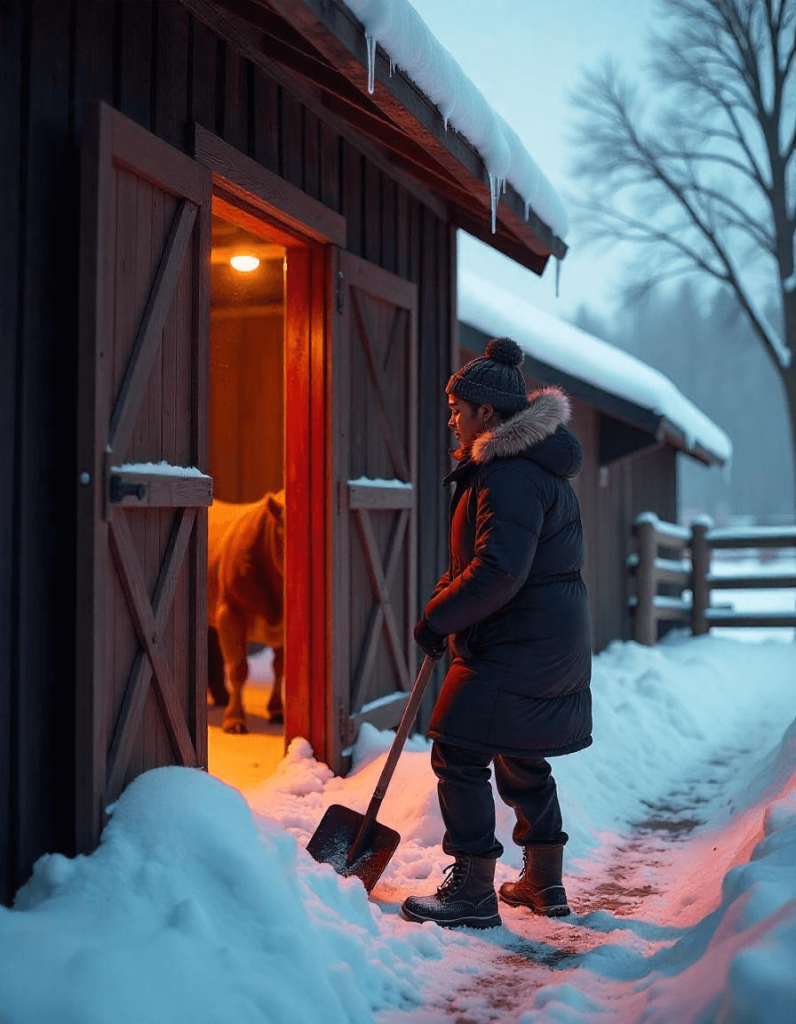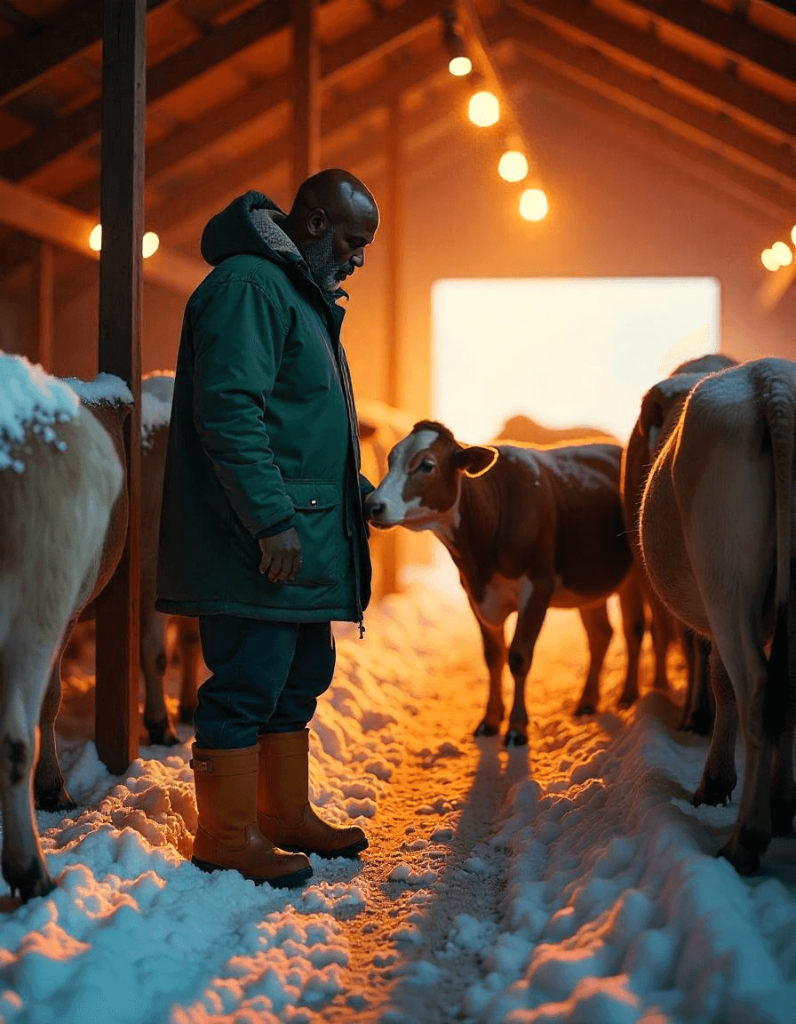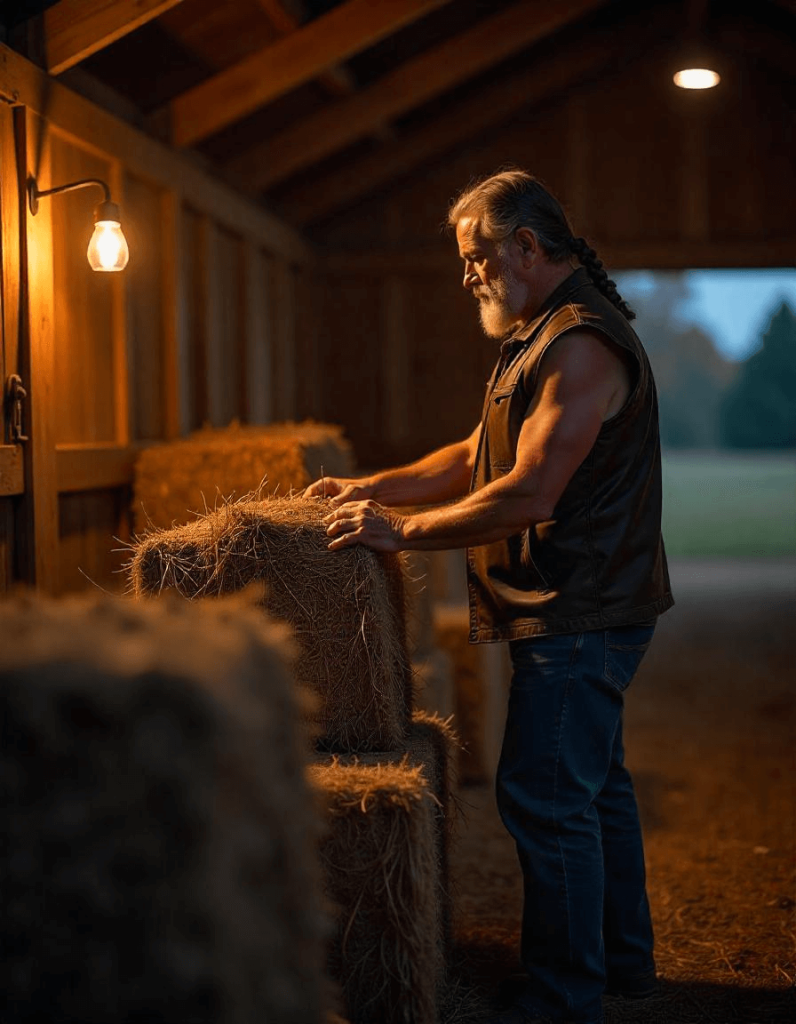Mar 11, 2025
Barn Maintenance Mastery: Build a Safe, Healthy, and Thriving Environment!
A well-maintained barn is the backbone of a successful farm. It is more than just four walls and a ceiling; it is a space where life unfolds. It is where your animals feel safe, where you reap the fruits of your labor, and where your legacy expands greater each day. By investing time towards maintenance, you are not only safeguarding your investment, but creating an opportunity for health, productivity, and serenity to thrive.
This powerful book will help you elevate your barn care to an art form, ensuring that it is always sturdy, safe, and ready to sustain everything that you have constructed and nurtured.
Build strength from the ground up.
The structure of your barn is what serves as the foundation to everything that you do. Regular inspections becomes the first line of defense to intercept issues before they snowball into a major expensive problem down the line.
- Make sure to check for leaks and missing shingles when doing a roof inspection. A sturdy roof means protection from the elements for your livestock, tools, and food.
- Inspect siding and walls for damage or holes that moisture or unwanted critters could pass through.
- Inspect the foundation for cracks and ensure that the surrounding area drains water. A solid, dry base means years of worry-free use.
Giving more focus to the structural care gives strength and stability which ensures a successful undertaking of any farm.
Use Air and Light To Your Advantage
A fresh barn looks bright which shows that it is well maintained. Natural light and clean air are not additional luxuries; they are essential to prosperity and wellness.
Ventilation systems lower the dangerous levels of ammonia and moisture by circulating fresh air into the dormant spaces. Vents and fans should be cleaned on a consistent basis to ensure the wellbeing of animals and humans.
Natural light facilitates the daily chores and boosts the morale of everyone in the room. Long-lasting illumination can be achieved by cleaning the windows and changing the bulbs to energy saving LEDs.
With proper breathing, your barn can be your animals’ heaven and the farm would prosper.

Comfort Begins from the Ground
Starting from the ground up is safety. Flooring should be clean, dry and clear of any potential hazards so that one does not get injured when walking.
Routine monitoring ensures floors do not contain cracks, and fissures, or are uneven. Swiftly repair damages to ensure there is no danger. Fresh bedding makes a big difference as well. Clean, warm, and dry bedding minimizes stress and reduces the chance of the animal getting sick. Frequent changing is needed but it is a small change that makes a huge impact.
Animals that are comfortable tend to be happy, healthier and more engaged.
Provide them with solid support, and in due course they will make good on their obligation to you.
Using Power Effectively
Electricity is the heart of modern barns, but it can be a double-edged sword. Everything functions properly due to the availability of dependable and safe power.
- Look over wiring on a regular basis. Rodents are capable of chewing through the insulation, which poses a major fire risk. Protective conduit along with rodent control measures will help to improve safety.
- Change to more modern lighting fixtures to increase energy efficiency and visibility. Protect electrical appliances in GFCI outlets from wet places where risk is high.
With reliable and modern technology, there is assurance of doing work in any season without fear.
Maintain Tranquility by Blocking Out Aggression.
Rodents and other pests not only destroy property, but also endanger health and safety. Aid your barn in defending itself.
Seal all gaps and cracks that may allow rodents access into the barn.
- Use rodent proof containers to store feed and eliminate the lure.
- Use barn cats as natural allies together with human traps and nontoxic repellents for effective pest control.
Your animals and you will live free from worry when the barn is clean and devoid of pest, giving you peace of mind.
Water: Forever flowing, always clean.
Water is life.
Overseeing your water systems guarantees that your animals remain hydrated and in good health throughout the year.
Water lines and automatic feeding systems ought to be checked regularly. Leaks need to be fixed right away to save water and reduce muddy conditions.
You also should winterize your system. Insulating pipes and installing heated waterers can reduce freezing and down time. Tanks and buckets should be cleaned frequently to reduce algae and bacterial growth.
Pure, clean water is one of the easiest methods to safeguard and boost the health and productivity of your animals.
Fire Safety: Safeguard What Matters Most
Fire is tragic, but can be avoided. Fire prevention should always be your first concern.
Store hay in areas that are well ventilated and dry so spontaneous combustion doesn’t occur. Smoking in the barn and places nearby is not allowed. Fire extinguishers should be stored in known locations and checked often. Everyone should know the emergency plan.
You have put too much effort in to hope for the best. Fire safety looks after your pets, income, and allows you to relax.
Cleanliness is Success
A barn that is clean is not only nice to work in, but is also critical to maintain health and safety.
To reduce illness and control smell, remove manure daily.
Disinfect the stalls, feeding areas, and the tools used with special attention for the animals’ safety. 🗓️ Making a plan on when to clean and what to clean will help keep everything tidy and in order.
Spaces that are clean increase productivity. When your barn is well kept, it not only looks great, but feels amazing, and this pushes everything forward in an astonishing way.
You barn is your legacy, protect it with pride.
Every nail that you hammer, every floor that you sweep, every system that you check shows your commitment. Barn care is not work, it is care for your livestock, farm and future.
Be proud of the space that you created. A clean barn not only keeps the animals healthy, but also keeps the people safe and the operations running. Your work will be appreciated every single day.
It is time to get your hands dirty. Your barn needs it, and so do you.
Let me know if you would like to make any more adjustments, perhaps for horse owners, dairy producers, or a certain climate?
Read more: Barn Maintenance Mastery: Build a Safe, Healthy, and Thriving Environment Minnesota Yard Customizing – Custom Yards, Crafted with Care.
More Details


